Monday October 10, was a big day for LAMP Boatworks. We installed the finished centerboard trunk in the Bevin’s Skiff, (our first building project, see blog To Build A Boat, August 2, 2007), made considerable progress fashioning the oars, built some sawhorses, and assembled a new tent effectively doubling our workspace. Jim Gaskins has spent considerable time meticulously fashioning the centerboard trunk. This piece is critical since it holds the centerboard to provide stability under sail but more importantly, has to be robustly built in order to absorb the shock transmitted to it through the centerboard during grounding events. The correct installation of this structure is also of great importance since it’s through the hull and subject to leaking if not properly done.
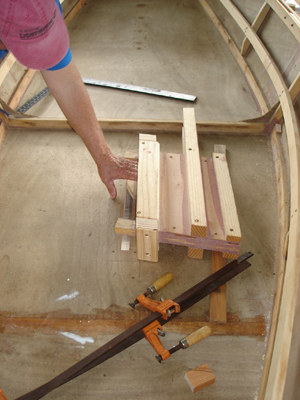
This picture shows the centerboard trunk on its side prior to installation. Note the slot in the bottom of the boat for the centerboard.
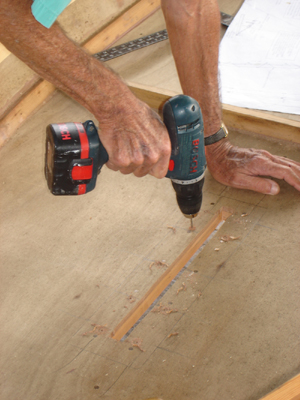
Pilot holes for brass screws were drilled through the bottom of the boat.
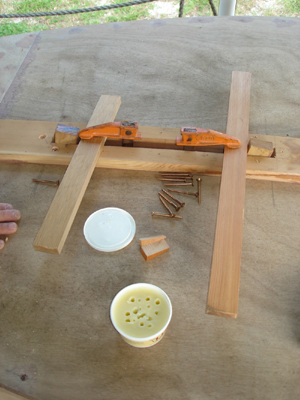
Then the centerboard trunk was clamped in place through the trunk, the boat placed upside down, and the assembly dry fitted with a number of brass screws lubricated with beeswax run through the pilot holes.
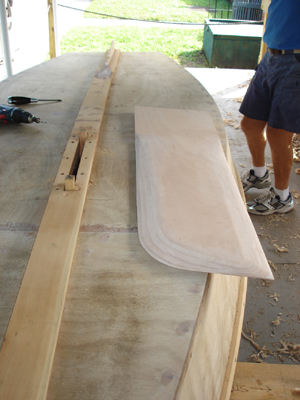
The above picture shows the completed dry fitting and the centerboard – the work of Eli Subin. Dry fitting is an important step in critical assembly processes. Whenever two timbers are assembled together using screws, sawdust and wood debris will find its way between the timbers affecting the quality of the joinery.
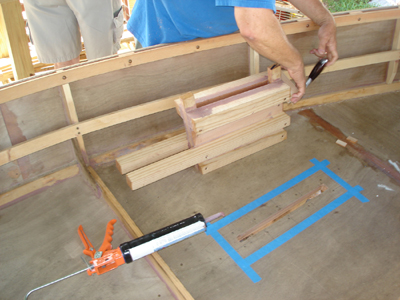
After the dry fitting, the structure is disassembled and sanded to remove all wood debris and splinters. Then the area is masked off and prepared for final assembly.
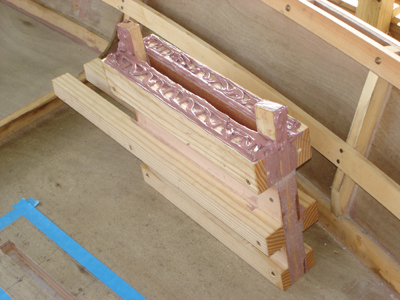
Maury Keiser has applied an adhesive to the bottom of the centerboard trunk. The masking tape will prevent it from squeezing out all over the bottom of the boat.
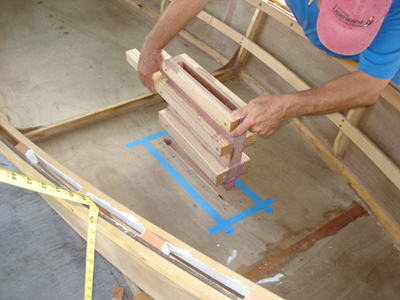
The centerboard trunk is then installed into the slot.
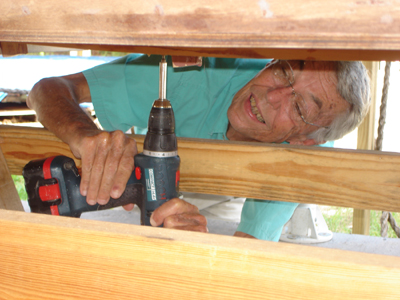
Jim Gaskins fastens the centerboard trunk in place from below with the brass screws used in dry fitting.
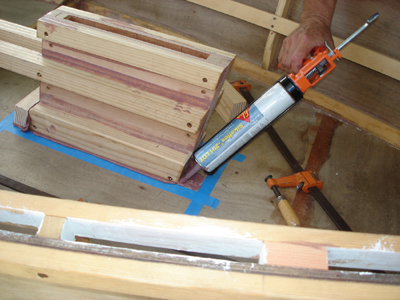
The centerboard trunk end-blocks are then installed with adhesive and screws.
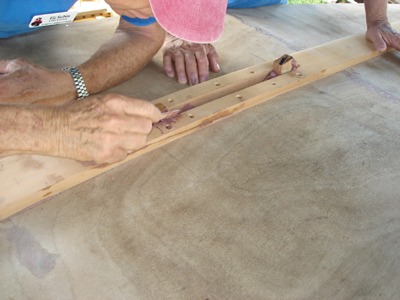
The boat is then turned over and adhesive applied to insure a waterproof seal around the centerboard trunk.
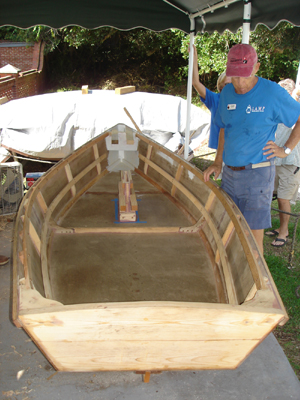
Finally, the boat is turned over again and the assembly left to dry and set. Here Eli has a good look at the finished installation.
The shaping of the oars went on at the same time the centerboard trunk was being installed.
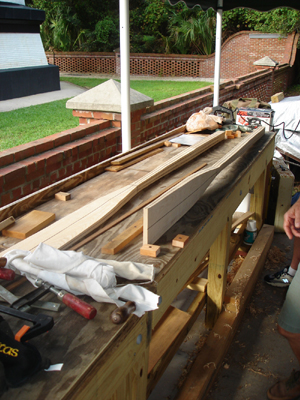
The oars have been in the works for some time and have received a good deal of shaping as can be seen in the above photo. Now the final shaping begins using planes and spoke shaves.
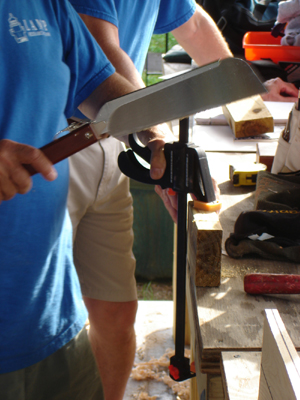
A jig was made to hold the oars while shaping. It’s much easier to get a good shape if your oar is not moving about on the workbench. Here Maury Keiser is cutting a block for the jig with a Japanese saw.
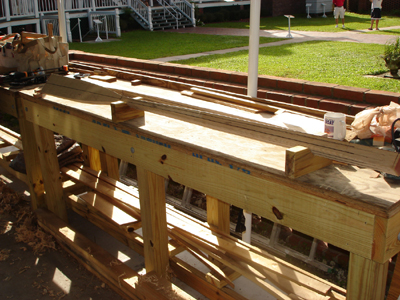
The blocks that make the jig were screwed into the workbench surface. Here you can see the oar in place and ready to work.
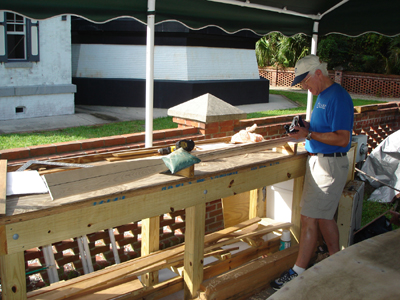
Finally, a weighted bag is placed on top of the gig to lock the oar in place. Now the shaping can begin.
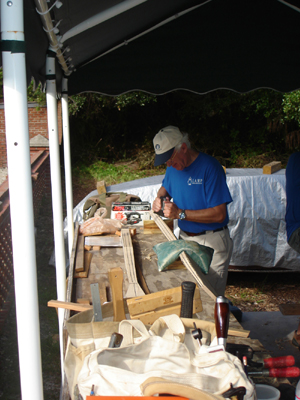
Ralph Higgins, one of the latest volunteers to join the boat builders is planning the oar.
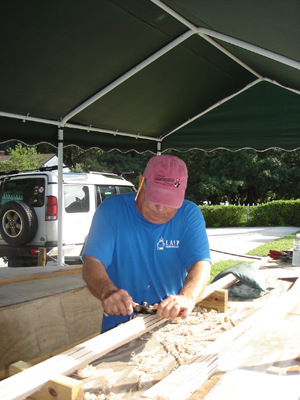
Maury Keiser has a go at it with a spoke shave.
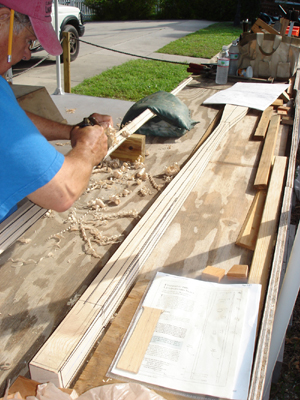
And then more planing.
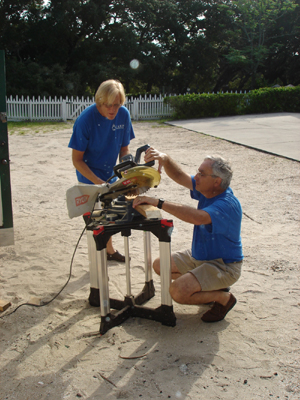
While all this was going on Dave Huber and Allan Moskowitz used the chop saw to cut lumber for a pair of saw horses being assembled.
As the morning wore on we decided to set up the new tent. Rich, Ray, and Heather of the Lighthouse staff helped with the effort.
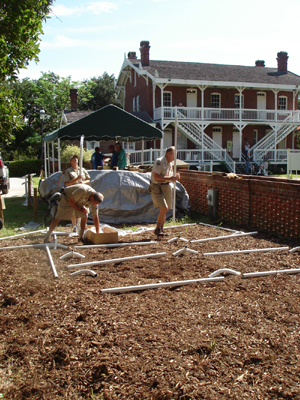
The numbered pieces were laid out in the proper order and fit together.
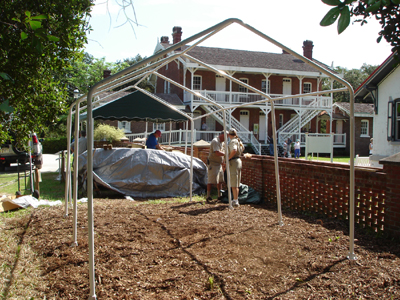
Then the tent support structure was raised and pinned together.
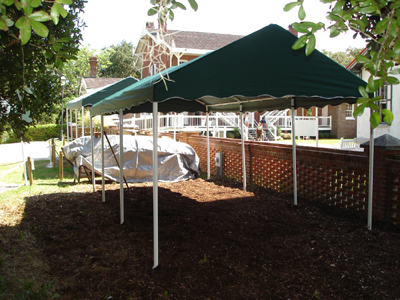
Finally the tent canvas was setup in place and the mulch was raked flat. With that the LAMP Boatworks’ working space doubled.
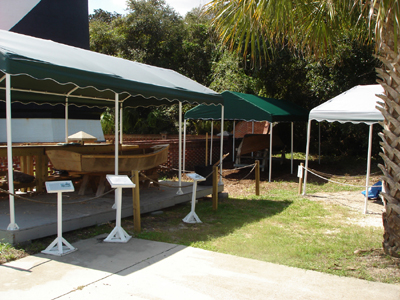
This is the new expanded workspace at the end of the day’s work session. The Bevin’s skiff will move into the new space after final assembly for painting and any other necessary finishing work. The lap-strake skiff will be moved into the shop tent for the fitting and installation of its frames.
It was a good day all in all. The Boatworks volunteers are becoming a very productive and fun team whose skills are continually increasing preparing the Boatworks for future and more complex building projects.

